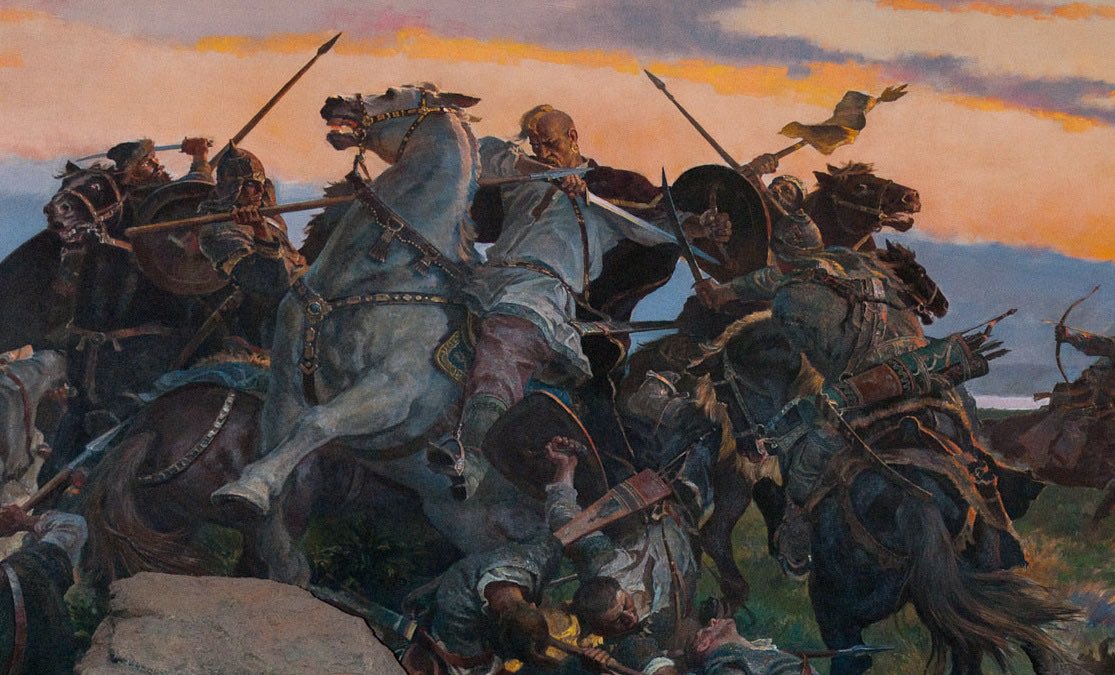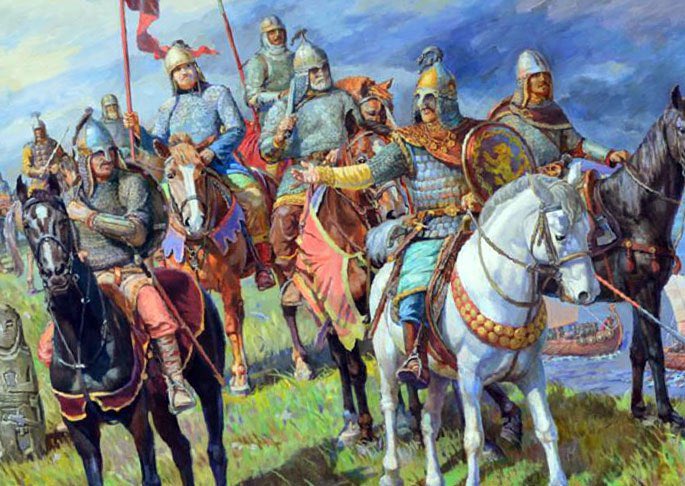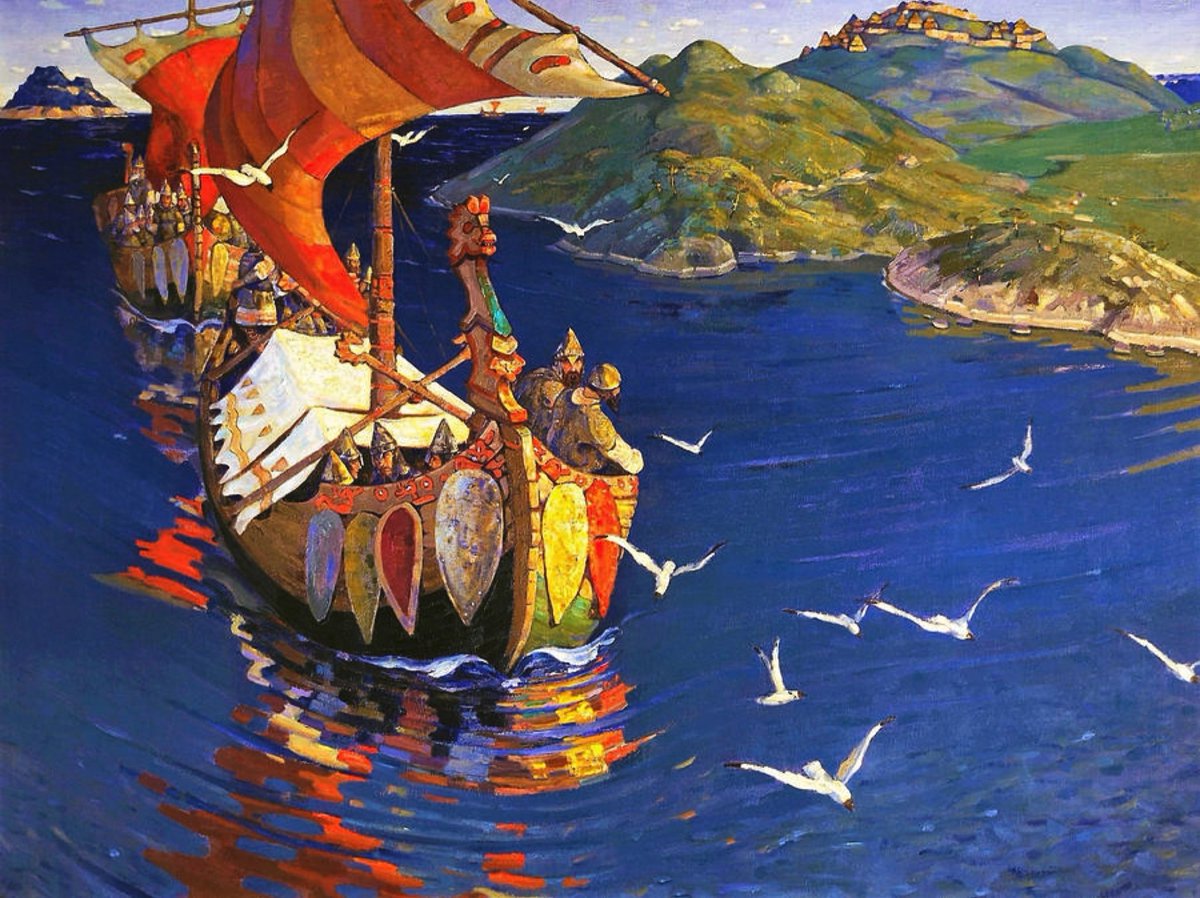
In the 16th century, South East Asia was a battleground between world powers as they struggled for control of the wealthy lands, trade routes, and resources of the region. 

@LandsknechtPike has an excellent thread on the Battle of Diu, where the Portuguese, Venetians, Mamluks, and local states all fought one another. Ethiopians & Ottomans were also present at the battle. Such was the importance of the region to new, truly global, powers.
https://twitter.com/LandsknechtPike/status/1404376829281120257
The Portuguese entered the region via the Cape of Good Hope, whereas the Spanish sailed from America, establishing a colony in the Philippines. From this colony, the Spanish bought luxury goods from Asia in exchange for gold & silver plundered and mined in the New World. 

However, the Spanish position was threatened by local powers. Magellan himself was killed by local people when he arrived in 1521 and the Spanish warred frequently with their neighbors. 

The most fierce wars were those with local Muslim states and the Sultanate of Brunei, which had begun to extend its reach into the Philippines. Spanish officials reported a constant influx of Middle Eastern and Ottoman Muslims migrating to the region. 

The Spanish official Melchor Davalos mentions, “Persians and Arabs and Egyptians and Turks … and even Moors from Tunis and Granada came here, sometimes in the armadas of Campson, former Sultan of Cairo and King of Egypt…” 

The competition between the Spanish and Brunei for control of the Philippines led the Spanish governor, Francisco de Sande, to declare war in 1578. Francisco had recently requested military aid from the governor of Mexico, lamenting the weakness of Spanish forces in the region. 

In response, the governor in Mexico sent weapons, arms, and 200 Mexican warriors with the Treasure Fleet to Manila. The sources mention these warriors as mulattoes, mestizos, and “Indians.” The “Indians” were likely full-blooded Aztecs and their former subject peoples. 

The Spanish conquest of Mexico was still recent. The fathers & grandfathers of these men may have fought with/against Cortes in his war of conquest. Although probably outfitted with Spanish weapons and armor, these men must have still carried the ferocity of their forefathers. 

Francisco left Manila with 200 Spaniards, 200 Mexicans, 300 Borneans, and 1,500 Filipinos in a truly multi-ethnic army. The army opposing the Spanish was equally diverse. In addition to Bruneians, Turks, Swahilis, Egyptians, Somalis, and Gujaratis all fought for the Sultan. 

Recent Ottoman expeditions to Aceh had brought soldiers with knowledge of modern tactics and cannon-forging skills to the region, putting the Bruneians and Spaniards on equal footing. 

The fighting was brutal but the Spanish reached the Brunei capital on April 16th, 1578. With the help of traitorous nobles, the Spanish entered the city. However, an outbreak of cholera or dysentery soon struck the Spanish camp. 

The Spanish were so weakened that 1,000 Bruneians counterattacked and successfully retook the city. Before leaving, the Spanish burned the mosque, the most imposing and ornate building in the city. The expedition lasted only 72 days. 

Despite the Spanish retreat, the Bruneians gave up their overseas empire and returned to a city-state, normalizing relations with the Spanish Philippines. 

Although we have no sources that describe the fighting, one can imagine the brutal combat that unfolded as these legendary warrior cultures; Aztec, Spaniard, and Ottoman clashed in the dark jungle of Borneo. 

After the conclusion of their conflict with the Brunei Sultanate, the Spaniards could turn their attention to the Cagayan River Valley. In 1580, Japanese pirates had set up forts here and began terrorizing the local population & shipping lanes. 

In 1582, the Governor-General of the Philippines, Gonzalo Ronquillo, dispatched Juan Pablo de Carrión, a knight and captain in the Spanish Navy, to dislodge the pirates. Ronquillo had written to the King and described the Japanese as, “the most belligerent people here.” 

Carrión left with a galleon, light ship, and five support vessels. He took 40 soldiers in addition to the sailors on the ships. Considering how few Spanish soldiers there were in the Philippines, it’s likely Carrión’s force included Mexicans, but we do not know for certain. 

Carrión first encountered the Japanese pirates, led by rōnin, masterless Samurai, at Cape Bojeador. The Spanish, outnumbered, boarded the large, heavily armed sampan (river boats). The Spanish were repulsed onto the deck of their own ship by the katana-wielding pirates. 

The Spanish formed a hasty wall of pikemen with arquebusiers behind, pushing the Samurai back thanks to timely reinforcements from the other boats. The Japanese abandoned their sampan and swam to shore, some drowned thanks to their heavy armor. Both sides took heavy losses. 

The Spanish then sailed up the Cagayan River where they found 18 sampans and the pirate fort. The Spanish fired their cannons and forced their way onshore where they dug trenches and moved the artillery on land, barraged the fort. 

The Japanese asked for gold to leave peacefully, but Carrión refused. The Japanese attacked the Spanish trenches with 600 men. The Spanish repulsed three attacks, the last being a desperate hand-to-hand struggle. After this the Spanish attacked the fort, routing the pirates. 

The Spanish plundered katanas and Japanese armor from the fort and kept them as war trophies. The Japanese never again returned to the region. It is hard to imagine Conquistadors & Aztecs dueling Samurai or fighting Ottomans in the jungles of Borneo, but it happened. 

The early modern world was more connected than we realize & that provides for some fascinating episodes of cross-cultural contact. Tagalog retains some Nahuatl loan words like “tatay” (father) and “palengke” (market), reminders of the Aztecs who once travelled there. 

Thought you all might find this interesting. @Paracelsus1092 @Peter_Nimitz @Babygravy9 @StilichoReads @Irkutyanin1 @Stuthefarmer @LaocoonofTroy @byzantinemporia @DanDavisWrites @ArcGreek @ActualAurochs @AncientDays1 @HistoryinStory
• • •
Missing some Tweet in this thread? You can try to
force a refresh




















